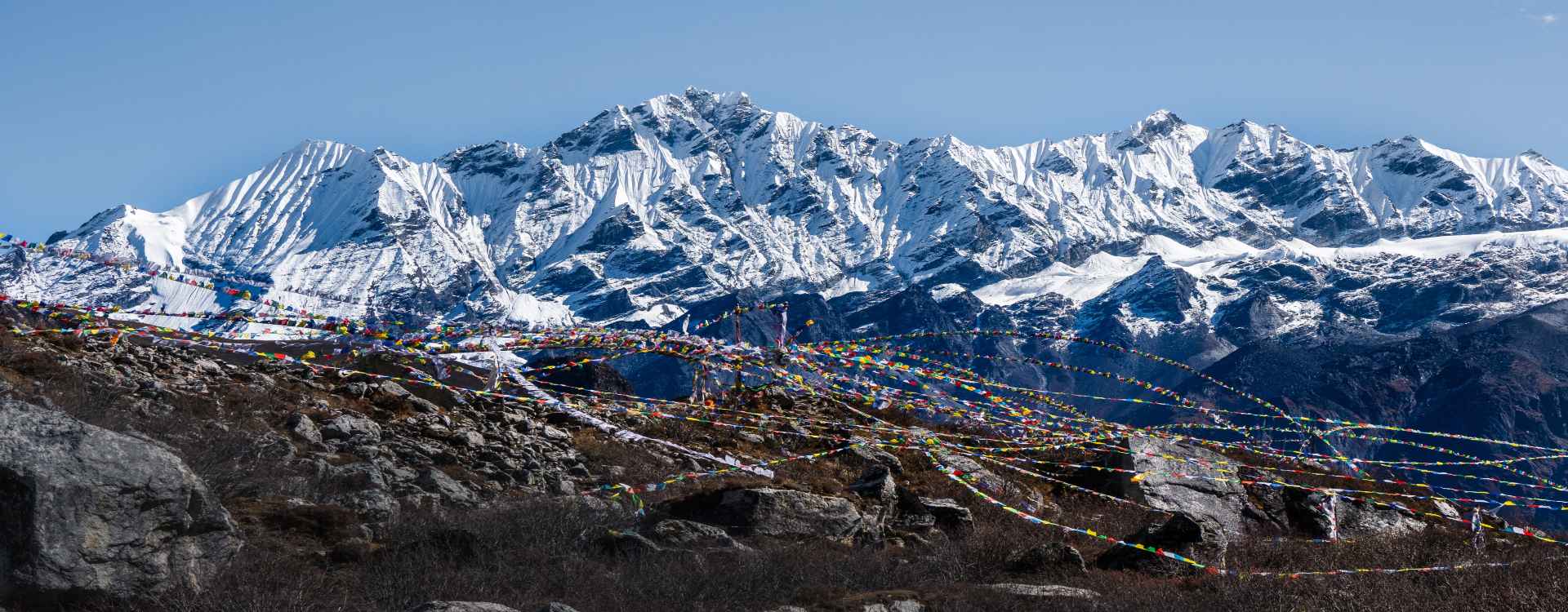
Choose Your Adventure: Mera Peak vs. Island Peak Climbing in Nepal
Table of Content
Nepal's Everest region is renowned for its towering peaks, breathtaking landscapes, and unparalleled trekking and climbing opportunities. Two of the most coveted peaks in this region are Mera Peak and Island Peak, both offering exhilarating climbing experiences and stunning views of the Himalayas. In this blog, we'll compare Mera Peak and Island Peak climbing adventures, helping you decide which one is the perfect fit for your next Himalayan adventure. Get ready to embark on this unforgettable journey.
Let’s Talk About Mera Peak – The Highest Trekking Peak in Nepal
Mera Peak, standing at an impressive 6,476 meters (21,247 feet) above sea level, is the highest trekking peak in Nepal. Located in the remote Hinku Valley of the Khumbu region. Mera Peak offers climbers a challenging yet rewarding ascent amidst stunning alpine scenery. The trek to Mera Peak base camp takes you through pristine forests, picturesque villages, and rugged mountain terrain, providing a true wilderness experience unlike any other.
Island Peak – A Himalayan Icon
Island Peak, also known as Imja Tse, is another iconic peak in the Everest region, standing at 6,189 meters (20,305 feet) above sea level. Situated in the heart of the Khumbu Valley. Island Peak offers climbers the opportunity to summit a Himalayan peak while enjoying breathtaking views of Everest, Lhotse, and other neighboring giants. The climb to Island Peak involves traversing glacial moraines, scaling icy slopes, and navigating technical sections, making it a challenging yet exhilarating adventure for experienced climbers.
Decide Difficulty and Technical Challenges
When it comes to comparing Mera Peak climbing with Island Peak, it's essential to consider the difficulty and technical challenges associated with each of the climbs. While both peaks are considered suitable for climbers with moderate mountaineering experience, there are some notable differences in terms of terrain and technical requirements. Mera Peak is known for its long, steady ascent and relatively straightforward climbing route, making it a popular choice for novice climbers looking to summit their first Himalayan peak. In contrast, Island Peak features steeper and more technical sections, including a challenging ice wall known as the "headwall," which requires the use of fixed ropes and crampons to ascend safely.
Romanticize Views & Scenery
Both Mera Peak and Island Peak climbing offer spectacular views of the surrounding Himalayan landscape, but each has its unique vantage points and highlights. From the summit of Mera Peak, climbers are treated to panoramic views of Everest, Makalu, Cho Oyu, and other towering peaks, as well as the stunning landscapes of the Hinku Valley below. On Island Peak, the breathtaking panorama includes the iconic pyramid of Ama Dablam, the vast Imja Valley, and the Khumbu Glacier stretching out below, providing a feast for the eyes and a sense of awe-inspiring grandeur.
Weather & Climbing Considerations Matters!
Another factor to consider when choosing between Mera Peak and Island Peak climbing is the appropriate season and weather conditions. Both peaks are typically climbed during the spring (March to May) and autumn (September to November) seasons, when the weather is more stable, and the skies are clear. However, Island Peak is more prone to high winds and inclement weather due to its exposed location in the Everest region, whereas Mera Peak is slightly more sheltered and less affected by adverse conditions.
Breathtaking Cultural and Trekking Experience
While trekking you will get to know a lot about their culture and tradition. They offer unique cultural and trekking experiences that add depth and richness to your adventure. The trek to Mera Peak base camp takes you through traditional Sherpa villages, Buddhist monasteries, and remote mountain valleys, providing insight into the rich cultural heritage of the Khumbu region. Similarly, the trek to Island Peak passes through charming Sherpa settlements, including the famous village of Dingboche, where you can immerse yourself in local culture and hospitality.
Time To Choose Your Adventure
Now that you've weighed the pros and cons of Mera Peak and Island Peak climbing, it's time to make your decision and embark on the adventure of a lifetime. Whether you're drawn to the towering heights of Mera Peak or the technical challenges of Island Peak, Nepal offers a wealth of opportunities for climbers of all skill levels to experience the thrill of summiting a Himalayan peak. So, lace up your boots, pack your gear, and get ready to conquer the mountains – your next epic climbing adventure awaits!
Plan Your Next Nepal Summit With Accessible Adventure Today!
In conclusion, choosing between Mera Peak and Island Peak is a decision that depends
on your personal preferences, experience level, and objectives for your climbing adventure. Whether seeking a moderate trekking peak with stunning views or a technical challenge with high-altitude thrills, Nepal has something to offer every aspiring mountaineer. So, take the plunge, follow your heart, and prepare to embark on a journey that will push your limits, test your courage, and leave you with memories to last a lifetime with Accessible Adventure - the summit awaits – which peak will you choose?
Just plan your trip and we’ll cover you with all the adventure you can enjoy in Nepal. From taking care of rafting to Langtang Valley trek you’ll be back with a bag full of memories and adventures.